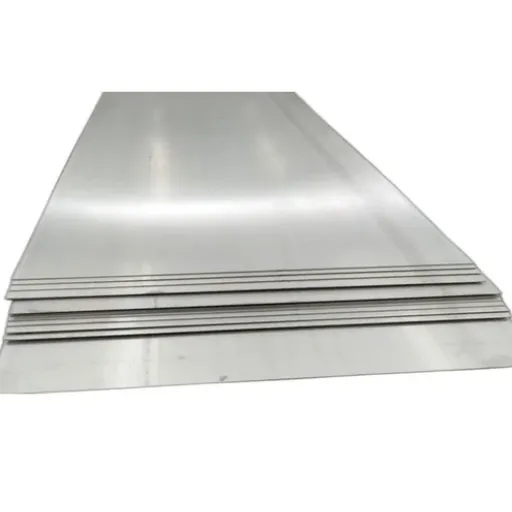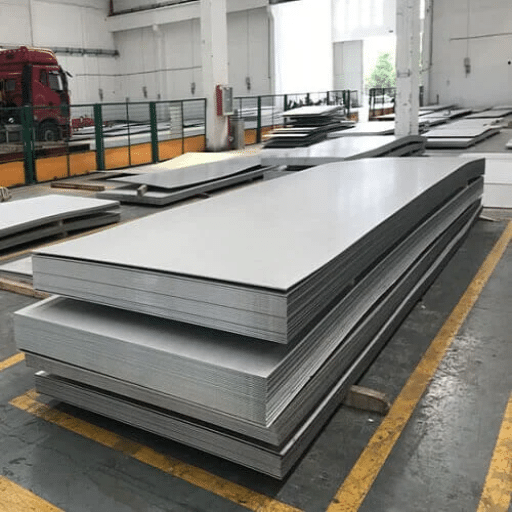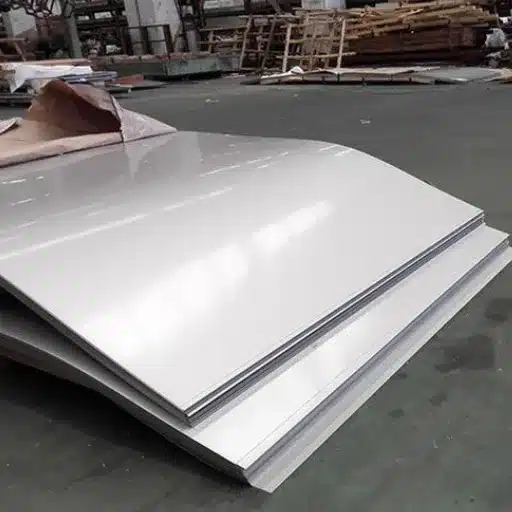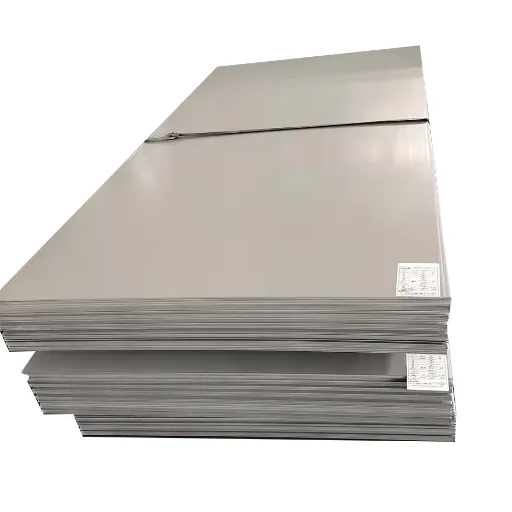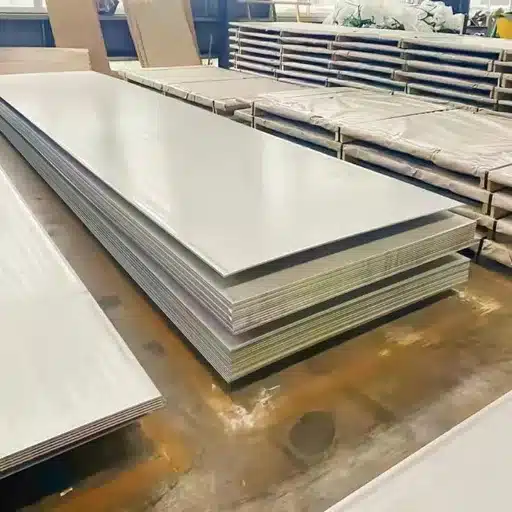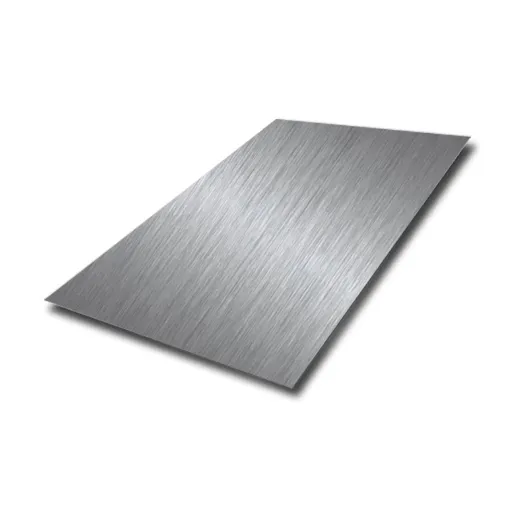Widely regarded as a fully versatile and common material in the construction and engineering industry, ASTM A36 steel is famed for its reliable strength, enduring versatility, and low price. As a low-carbon steel, it’s considered the go-to for a number of fabrication projects. What distinguishes ASTM A36 is its composition, mechanical properties, and practical applications. This article aims to expose the vital attributes and properties that makes A36 steel indispensable when dealing with infrastructure development along with advanced manufacturing processes. With the knowledge of A36, engineers and contractors will greatly improve their technical prowess which leads to sound decisions in project executions.
What are the Material Properties of ASTM A36 Steel?
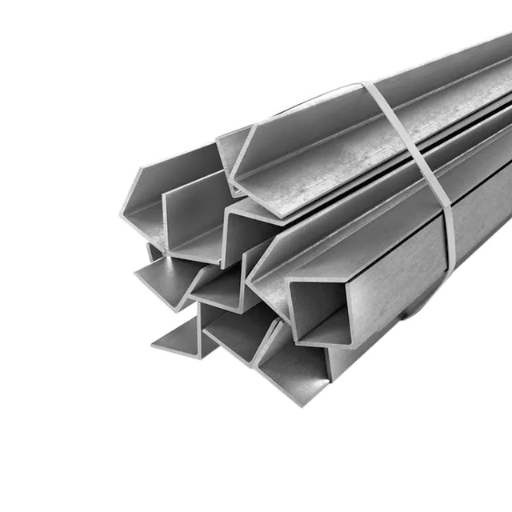
To add, A36 also comes with equally notable perks including metallurgical balance where versatility via strength, ductility, and weldability work in tandem. With electrical resistivity, A36 displays an insulating property alongside magnetic permeability resisting outside materials that tend to become lodged after heating. Some other unique properties that A36 holds includes:
- Tensile Strength: Ensures durability while under tension with a minimum tensile strength of 58000 to 80000 psi (400 to 550 MPa).
- Yield Strength: Maintaining low levels of deformation under load offers a minimum 36000psi (250MPa) yield strength.
- Elongation: Marked at 20-23% elongation to demonstrate stretchability.
- Density: As is characteristic of the majority of structural steels, the density is constant at 7.85 g/cm³.
- Weldability: Joins are efficient and reliable due to excellent weldability stemming from a lower carbon content.
- Machinability: Good ease in cutting, drilling, or structuring for specific uses.
Understanding the chemical composition of ASTM A36
ASTM A36 steel is mostly iron with specific amounts of other chemical elements to give desirable mechanical properties and structural performance. It is normally consists of the following:
- Carbon (C): Up to 0.26% – Limits and reinforces ductility, weldability, and strengthens the steel.
- Manganese (Mn): 0.60–0.90% – Improves tensile strength, hardness, and wear resistance.
- Phosphorus (P): Maximum of 0.04% – Low phosphorus content aids toughness and avoids brittleness.
- Sulfur (S): Maximum of 0.05% – Like phosphorus, controlled range of sulfur prevents brittleness and aid in weldability.
- Silicon (Si): 0.15–0.40% – Adds Strength to the material and the performance under loading.
Balanced precisely, these elements provide ASTM A36 steel an ideal combination of strength and malleability with versatility making it applicable in structural and industrial settings. Meeting standardized criteria of chemical composition accuracy guarantees quality and effective performance uniformity throughout different manufacturing settings.
Physical properties of A36 carbon steel
ASTM A36 carbon steel exhibits a range of physical properties that contribute to its widespread utility in structural and industrial fields. Its density is approximately 7.85 g/cm³ (0.284 lb/in³), which aligns with standard carbon steel characteristics. The material’s melting point is around 1,426–1,538°C (2,600–2,800°F), indicative of its robust thermal stability.
A36 steel has a thermal conductivity of approximately 120 W/m·K at room temperature, allowing it to efficiently conduct heat without compromising its structural integrity. Additionally, it displays a modulus of elasticity of 200 GPa (29,000 ksi), ensuring resistance to deformation under high stress. Its tensile strength typically ranges from 400 to 550 MPa (58,000 to 80,000 psi), with a minimum yield strength of 250 MPa (36,000 psi), making it suitable for load-bearing applications.
The hardness of ASTM A36 steel is usually between Brinell 119 to 162 HB which aids in machinability and wear resistance. In combination, having these qualities and A36’s low cost makes it a prime candidate for structural frameworks, components manufacturing, and welded assemblies.
How Does the Chemical Composition Affect A36 Steel?
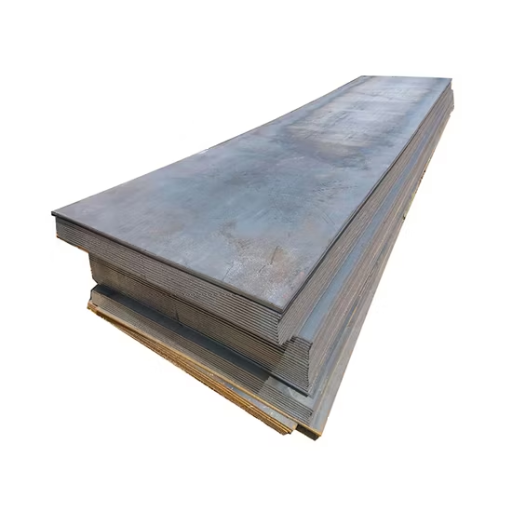
Welding with A36 Steel: The chemical composition influences its mechanical properties, three performance characteristics evaluation, and each element, iron, carbon, manganese, phosphorus, sulfur, and silicon, contributes distinctly. Typically, carbon 0.26% does not exceed a portion lower than the ductility and welded.
Manganese aids in wear-resistant and provides tensile strength in A36, typically found in concentrations of 0.6% to 1.2%. Phosphorus and sulfur contribute to the brittleness while improving durability, hence, are kept at low levels. Silicon positively aids in increasing strength and A36’s ability to withstand higher temperatures. While, it does not exhibit Silicon does not exhibit large quantities in A36 steel, its contributions are vital. Thus, A36 steel’s composition is balanced providing reliability and versatility in structural and manufacturing applications.
Influence of carbon content on strength
In carbon steels, which high-carbon steel generally refers to, the quantity of carbon determines the sharpness. Increased carbon concentration usually improves both tensile strength and hardness of the steel. Soft steels, like A36 steel, perform better in construction because the carbon concentration must not exceed 0.29%. In this instance, the balance provided to the steel is found in formability, simplicity in machining, and shape adoption during fabrication/welding processes. In addition, the enhancement of stress-resisting capability due to the carbon atom’s interaction with the iron lattice structure ensures its heavy-duty construction suitability; Bridges and building frameworks. Research shows that the incremental increase in carbon content will positively impact strength exponentially, however, this is often countered by decreased toughness. This trade-off is pivotal for engineers and manufacturers choosing specific materials for set applications.
Comparison with other carbon steel grades
|
Grade |
Carbon Content (%) |
Strength |
Toughness |
Applications |
Heat Treatability |
|---|---|---|---|---|---|
|
Low Carbon Steel |
|
Low to moderate |
High |
Automotive parts, pipelines |
Limited |
|
Medium Carbon Steel |
|
High |
Moderate |
Gears, axles, machinery parts |
Excellent after hardening |
|
High Carbon Steel |
|
Very high |
Low |
Cutting tools, springs |
Excellent |
|
Ultra-High Carbon |
|
Extremely high |
Very low |
Knives, punches, dies |
Limited, may become brittle |
What are the Applications of ASTM A36 Steel?

Due to its toughness and strength properties, it is extensively used in construction and industry. A36 steel’s key application encompasses:
- Structural Components: Used widely in beams, columns, and other load-bearing building and bridge structures.
- Fabricated Parts: Used widely in frames, brackets, and base plates fabrication.
- Shipbuilding: It is used in hull construction and supports for decks because of its durability.
- Machinery and Equipment: Applied in manufacturing equipment such as tanks, gears, and tools.
The affordability, weldability, and tensile strength of A36 steel make it applicable and reliable over an array of industries.
Common structural applications for A36
ASTM A36 steel is widely used in structural applications for several industries as it has good mechanical properties and is versatile. One of the prominent applications is the manufacturing of steel beams, columns and girders which are used for building and bridge frames to provide structural stability and load balancing as well as distribute the load evenly. Moreover, it is used in the construction of industrial warehouses and pre-engineered buildings where the strength of the material is necessary due to wide openings and adaptability to various designs is required.
Within civil engineering, A36 steel is used for pre-manufactured large scale infrastructure components like drainage culverts, retaining walls and guard rails. It is most advantageous in these works having to be welded together in multiple sections due to its weldability. Also, in transportation engineering for railway lines and supports for elevated highways, the structures have to withstand immense weight; thus, A36’s durability and resistance to deformation are extremely useful.
In mechanical designing, cranes, scaffolds and foundations of heavy equipment are constructed with A36 steel. This steel is suited for the heavy equipment machining because of the reliability, durability and strong tensile properties it offers at a cost-effective price. The evolving trends in structural engineering with modern design techniques have proven its cost-effective nature while maintaining performance.
Applications in machinery and equipment
- Machine Frames and Bases: A36 steel is widely used for the machine bases and supporting frames of industrial apparatuses. The material is stable and robust, thus providing a strong foundation required to minimize vibrations for precise operational accuracy.
- Agricultural Equipment: A36 steel is used to make tools such as ploughs, axes, and tillers. The strength and malleability of the alloy enables the fabrication of tools required for intensive outdoor and soil work.
- Construction Vehicle Components: Chassis frames, buckets and attachments for construction vehicles such as bulldozers, backhoes, and cranes are made using A36. It’s wear and heavy loading endurance allows long lasting performance in harsh construction environments.
- Industrial Equipment Tanks and Storage: A36 steel is used in building industrial tanks, storage containers, and pressure vessels. Their anti cracking under stress, immense pressure, and exceptional ease of machining make them such versatile materials.
As indicated in the previous discussed applications, A36 steel serves various functions in machinery and equipment which underscores its importance to industries that require dependable and low-cost materials. Each of these sectors may require different functionalities from a single material.
How is ASTM A36 Steel Welded?
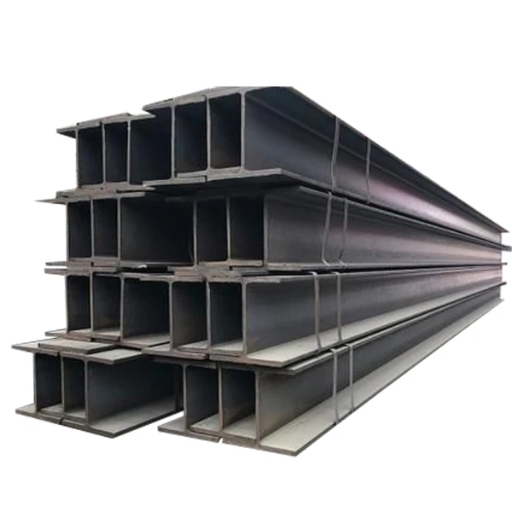
ASTM A36 is a steel with exceptional weldability suited for various welding techniques like shielded metal arc welding (SMAW), gas metal arc welding (GMAW), and even submerged arc welding (SAW). Due to the low carbon content, SMAW and GMAW possess good ductility and do not crack easily during the welding. Generally, for best results, no preheating is needed for thinner sections, but in cold environments, thicker pieces benefit from some preheating in the range of 50 – 150°F to help in preventing thermal stress. Following post-weld cool down steps helps further restrict distortion of the structure. Considering adaptability to the structure of the material, significant strength and durability with proper preparation and technique can be achieved in the welds.
Best practices for welding properties
- Material Preparation
The first step in ensuring that surfaces to be welded are clean requires removing oil, rust, or even paint limits, as not only can the quality be compromised, but also weak points can be introduced due to contaminants. Optimal preparation can be achieved with chemical cleaning techniques like solvents or even brushing alongside grinding tools.
- Appropriate Welding Parameters
Important welding parameters like voltage, current, and travel speed must be set properly to achieve desired quality in the welds. Current setting is crucial to penetrating deeper, thus on thicker sections a higher current is advantageous. Correct travel speed also needs to be observed in order to avoid irregular bead formation and uneven heat distribution.
- Selection of Filler Material
In order to achieve good, defect free welds, strong bond between the welded portions and adjoining sections of the structures termed as filler material and base material should be attained. Filler that does not match with base metal can weaken the weld joint by reducing mechanical strength and increasing corrosion attack. This is commonly encountered when welding high strength steels where material specification dictates the filler requirement.
- Thermal Control
Controlling the heat input is critical to avoid structural damage like warping or cracking. Preheating and monitoring interpass temperatures are beneficial for hydrogen cracking susceptible metals like high-carbon steels. Moreover, incremental cooling should be applied to reduce residual stresses in thicker or more alloyed materials.
Following these practices with the recommended, documented levels of guidance ensures high levels of integrity, performance, and durability in welded applications while maintaining long-term safety.
Recommended welding techniques for A36
In contrast to other A36 steel traits, its weldability reigns supreme. It can be joined through gas-shielded welding, shielded metal arc welding, gas metal arc welding, and Flux-Cored Arc Welding (FCAW). These methods are preferable since they require low carbon content, high technique and low tensile strength for A36. For thin sections of A36 the shields do not need to be preheated because of the low carbon equivalent SMAW A36 has. Still, in the case of low environmental temperatures or using thicker materials, a preheat ranging between 50°F to 200°F is recommended to prevent hydrogen-induced cracking and residual stress for the weldment.
Unless excessive stress concentrations are introduced due to the welding environment or the application requires tight tolerances, post-weld heat treatment (PWHT) is not needed for A36. Best results are obtained when electrodes for SMAW or ER70S-6 wire for GMAW are used, as these provide adequate tensile strength and ductility equivalent to A36. It is also helpful in preserving the mechanical characteristics of the build-up by exercising restraint in the welding sequence. Controlled interpass temperature control of 250°F to 400°F helps in preventing distortion in large assemblies. Following the suggested guidelines ensures that high-quality welded joints will be achieved with long-term structural integrity in A36 steel applications.
How Does the Machinability of ASTM A36 Compare?

ASTM A36 steels are easier to machine than most other structural steels, which makes almost all machining operations economical. Due to its lower carbon content, A36 can be easily drilled, cut, punched and milled using standard machining tools. Although A36 is not as hard as higher carbon alloys, it possess a well balanced composition which ensures reliable performance in low precision applications where ease of fabrication is needed. That is why A36 is a practical material in machining.
Machining of ASTM A36 compared to other carbon steels
|
Key Point |
ASTM A36 |
Higher Carbon Steels |
Low Carbon Steels |
|---|---|---|---|
|
Carbon Content |
Low (approx. 0.25%) |
Medium to high (0.3-1.0%) |
Very low (below 0.20%) |
|
Machinability |
Good |
Moderate to difficult |
Excellent |
|
Hardness |
Low to moderate |
High |
Low |
|
Strength |
Moderate |
High |
Low to moderate |
|
Ductility |
High |
Moderate |
Very high |
|
Weldability |
Excellent |
Requires skill or preheating |
Excellent |
|
Tool Wear during Machining |
Minimal |
Significant |
Minimal |
|
Surface Finish Achievability |
Moderate |
High |
Excellent |
|
Cost |
Low |
High |
Moderate to low |
|
Heat Treatment Adaptability |
Limited |
Highly flexible |
Minimal |
|
Applications |
Structural, general machining |
Precision tools, cutting tools |
Lightweight parts, sheets |
|
Cutting Speed (approx.) |
75-125 ft/min |
50-100 ft/min |
125-200 ft/min |
Factors affecting the machinability of A36 steel
- Material Composition
A36 steel has a low quantity of carbon which helps A36 steel endure stress-residue well. A36 steel contains 0.26% carbon, and small quantities of Silicon, Phosphorus, Sulfur, Manganese, as well as other alloying elements. Higher-carbon steels would have better machinability since they have lower ductility and reduced weldability.
- Heat Treatment
Unlike alloy steels, A36 does not undergo heat treatments which makes it softer. The lack of processes to increase hardness makes it more troublesome in precision machining environments.
- Tooling Material
Selection of cutting tools such as high-speed steel (HSS) and coated tools influence machinability. For HSS A36 steel, carbides are much more suitable for higher wear-resistant cuts.
- Cutting Speed and Feed Rates
As with most metals, A36 steel has optimal cutting speeds between 75 and 125 feet per minute with respect to tooling material and machining conditions, with specific feed rates dependent on surface quality and tool longevity.
- Coolants and Lubricants
Using coolants correctly reduces heat generation during machining processes, which enhances surface quality while prolonging tool longevity and effectiveness. Although A36 steel releases moderate heat compared to harder materials, sufficient lubrication is still important.
Considering these variables will allow machinists to optimize processes on A36 steel, achieving efficient material removal with minimal tooling expenditure and accurate final dimensions.
What are the Steel Properties of ASTM A36?
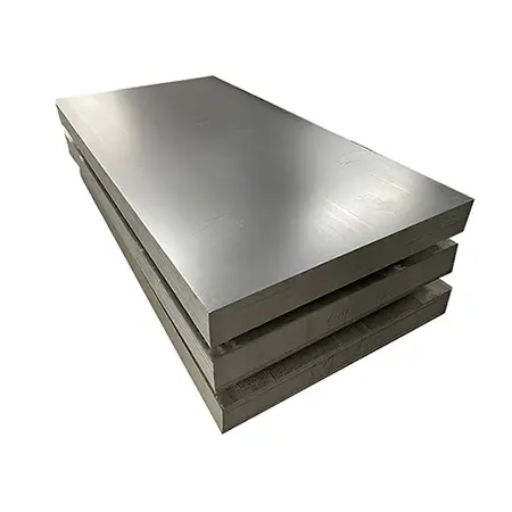
ASTM A36 steel is an often-used structural equivalent grade carbon steel encompassing reasonably diverse mechanical and chemical properties. Its important distinguishing features are:
- Certain level of tensile strength from 58,000-80,000 psi providing favorable performance under tensile loads.
- Yield Strain: Less than forty two thousand psi.
- Elongation around 20% in 2 inches showing acceptable ductility.
- Composition: Contains 0.29% carbon while manganese, sulfur, phosphorus and silicon are present in the alloy to give strength to A36 steel and improve its weldability.
A36 steel has broad applications ranging from construction and bridges to fabrication due to its machinability, weldability, and low carbon content.
Understanding yield strength and tensile strength
Near impossible to extract yield strength and tensile strength that comply with structural materials. Yield strength delineates the utmost stress a material can withstand without physical change. Suitable for moderate, enduring tasks, A36 steel’s yield strength is pegged at 36,000 psi (250 MPa).
The maximum stress that the material can resist while being pulled without leading to failure is known as tensile strength. In the A36 Steel, the tensile strength is roughly between 58,000 psi to 80,000 psi which is equivalent to 400 to 550 MPa. Because of these attributes, the A36 allows construction steel to be used for numerous applications. It is also because of these attributes that the steel is more advantageous while being used in construction, where sufficient strength is required but also the ability to deform under stress, helping mitigate impacts and avert a catastrophic failure while under load.
Evaluating the ductility of A36 steel
The ductility of A36 steel enhances its performance in construction and structural work where stretching without breaking is critical. A36 steel exhibits a minimum elongation of approximately 20% for a 2-inch gauge length enduring significant plastic deformation before breaking A36 steel demonstrates ductility. This ductility allows steel to absorb energy, lessening the chances of brittle failures.
The ability to perform cold and hot forming processes further emphasizes ductility and suitability for shape and fabrication requirements. Also, A36 steel’s ability to elongate and deform under various loading conditions, such as seismic or dynamic loads, reveals the reliability of A36 Steel for critical applications. Knowing these characteristics aids in selecting materials especially for safety and long service life in engineering applications.
Reference Sources
-
Ultrasound Measurement for Mechanical Properties: This study explored the correlation between acoustic wave characteristics and mechanical properties of ASTM A36 steel.
-
Mechanical Properties of Welded ASTM A36 with Stainless Steel Cladding: Cladding with 309L stainless steel improved tensile strength by 16% at elevated temperatures and enhanced corrosion resistance.
-
Post-Fire Mechanical Behavior of ASTM A36: Air cooling from high temperatures increased ductility but reduced yield strength, while water cooling enhanced tensile strength but reduced ductility due to martensite formation.
Frequently Asked Questions (FAQs)
Q: What are the mechanical properties of ASTM A36 steel?
A: ASTM A36 steel exhibits excellent mechanical properties, including a minimum yield strength of 36,000 psi and an ultimate tensile strength of 58,000 to 80,000 psi. Its ductility is also notable, allowing it to be molded and shaped without breaking.
Q: What is ASTM A36 carbon steel used for?
A: ASTM A36 carbon steel is widely used in various applications including construction, automotive, and agricultural industries due to its versatile properties. It is primarily used for steel plates, beams, and other structural components.
Q: Can ASTM A36 be heat-treated?
A: Yes, the heat treatment of ASTM A36 is possible, though it is typically not required. Heat treatment can enhance the mechanical properties of the material, but the steel is generally used in its hot-rolled state for most applications.
Q: What is the composition of ASTM A36 steel?
A: The composition of ASTM A36 steel includes carbon (0.26% to 0.29%), manganese (0.60% to 0.90%), phosphorus (max 0.04%), sulfur (max 0.05%), and iron as the balance. This composition contributes to its strength and ductility.
Q: What are the advantages of using A36 steel plate?
A: A36 steel plate offers several advantages, including excellent welding properties, good machinability, and a wide range of applications in construction and manufacturing. It also has a good strength-to-weight ratio, making it suitable for structural applications.
Q: How does the machining of ASTM A36 steel compare to other materials?
A: The machinability rate of ASTM A36 is quite favorable, especially when comparing it to other carbon steel materials like 1018 steel. A36 steel can be easily machined using conventional techniques, making it a popular choice in industrial applications.
Q: What types of steel plates can be made from ASTM A36 material?
A: ASTM A36 material can be used to manufacture various types of steel plates, including hot-rolled and cold-drawn A36 plates. These plates are commonly utilized in structural applications due to their durability and strength.
Q: Is ASTM A36 steel corrosion resistant?
A: While ASTM A36 steel is not specifically designed for corrosion resistance, it can be treated or coated to improve its resistance to corrosion. For outdoor applications, additional protective measures such as painting or galvanizing are often recommended.
Q: What industries commonly use A36 steel material?
A: A36 steel material is commonly used across various industries, including construction, automotive, and agricultural sectors. Its structural properties make it ideal for use in buildings, bridges, and heavy machinery.
Q: What are the typical applications for A36 steel plates?
A: A36 steel plates are typically used in construction for structural components, including beams, columns, and frames. They are also used in the manufacturing of machinery, automotive parts, and various industrial applications due to their versatile properties.

